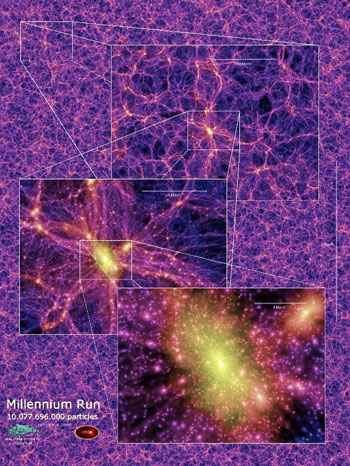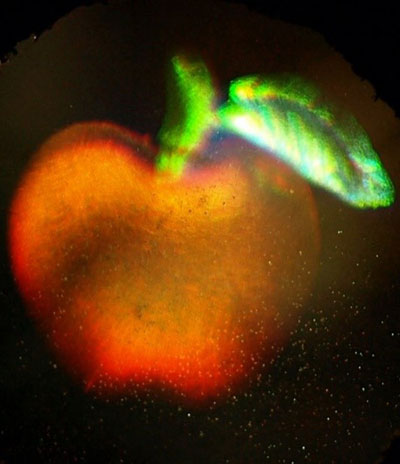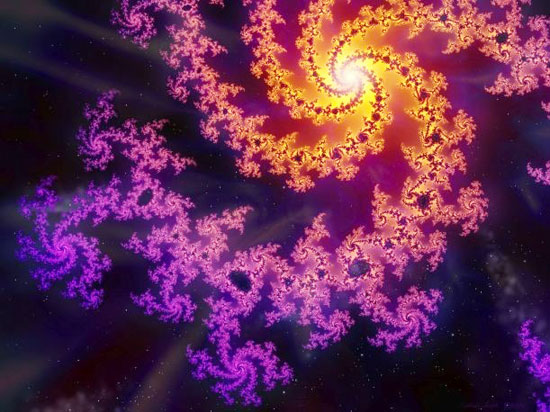The holonomic brain: the holographic nature of consciousness and reality

Holograms come in many shapes and sizes, and for the most part, people are at least superficially familiar with the concept of holograms, but this is mostly reserved for the realm of fun eye candy and artistic works. However, if one was told that the world around them, and in fact they themselves are holographic, it would be brashly dismissed as ludicrous dribble. Well, we’re proposing precisely such an “absurdity”, and we seem to be in good company.
Consciousness is the driving force behind the manifestation of form within this holographic matrix. This hologram has close relations with fractals, and a lot of times, the hologram of existence is usually referred to as a fractal hologram. However, what is a fractal, and ultimately, what is a hologram?
A fractal is a mathematical set whose constituent parts become increasingly detailed according to a fixed exponential formula, revealing recurrent self-similar properties as it is observed on a smaller and smaller scale. In other words, the initial object that one observes, when orienting one’s point of view closer and closer to the object, reveals the existence of a pattern within it. That pattern is constructed of a grouping of smaller patterns, with parts the same shape of the initial larger object, and are then made up of still smaller versions of the same pattern. This “bottomless pit” rendering of patterns can technically extend to infinity, eventually revealing that the initial object or image was never really made up of anything. Therefore, what one sees with their conscious eyes is a hologram – an object that appears to take the form of something due to hidden information within it. In other words, something that is an illusion; an illusion that has the appearance of properties that it really does not have.
The Holographic Nature of Consciousness
Consciousness is required to experience these fractal holograms, for consciousness precisely is the thing that brings anything into existence. For if there is no consciousness, then where is anything at all if there is no observer? We could explain consciousness in this manner: Anything that can be acted upon by something else is conscious, precisely because there will be an affect upon it, indicating that it exists and is subject to the natural laws of existence. In essence, the two objects mutually bring each other into existence. Now before you run the thought of “how can a rock be conscious?” through your head, let us continue with the explanation. In accordance with this definition of consciousness, since anything that exists is conscious, that means that atoms are conscious, and if atoms are conscious, then molecules are conscious. If molecules are conscious, so then are cells and compounds. If cells and compounds are conscious, so then are organs, and if organs are conscious so then are organ systems, and then bodies, the brain and the individual neurons that make up the brain, who learn to identify the mass collection of additional cells that it is attached to as a collective self. Every individual element of the body are all independent parts that connect and function interdependently as one integrated whole. That is also akin to a rock and its individual minerals and compounds which are all made of those smaller elements which mutually bring each other into existence.
The fact is that consciousness is simply everything that is. The only difference is in the way in which experience is rendered from being to being, thing to thing and part to part. The difference in the consciousness of a rock and that of a living being, is that a rock lacks an element called a brain (and the subsequent infrastructure of the senses) to actively respond to phenomena and identify its body as an integrated whole; however, it is conscious nonetheless. Consciousness of this is interdependent on the consciousness of that, and thus the world that is can exist. It is this non-absolute nature of consciousness that breeds the world around it, which illustrates the holographic nature of consciousness itself and thus maintains that the world it is within is an illusion; a fractal hologram.

Within this hologram of a world, when you examine yourself, where then are your thoughts, and indeed do they exist in the first place? Simply attempting to use the reasoning that you are thinking, so therefore you are, is not sufficient, because who is thinking? Where is your mind? You can say it’s in your brain, but then where in your brain? Is it located in a specific region, a specific cell? And do those cells also not have their own smaller parts, who then have their own smaller parts? Few are aware of the fact that the apparent solidity of things in the human sense realm is not all there is. Few are aware that in looking at your arm or a table, there exists below the shallow display of ordered form, the ability of one’s point of observation to extend increasingly further, going deeper and deeper, similar to what happens when you zoom into a rendering of the earth on a computer starting from space and eventually ending up in someone’s living room. There is an entire universe of hidden information concealed from the senses, because the realm of ordered form which the senses reside within, known as the human organism and its surrounding world, needs not tune into this immense matrix of concealed information for day to day operation. If it did, the organism would thus be rendered far beyond confused, with a crippling inability to function properly. However, all one needs is strong enough instrumentation to delve down or expand out, and one will see that whether small or large, that which is, will never be held by the limit of absoluteness, neither in size, nor in form. What exists in the infinitely small, is mirrored in the infinitely large – “As above, so below”.
The world is a hologram, and there is a plethora of scientific studies that are finding evidence to support this. Some propound that the senses command the systematic ordering of information which they receive, in accordance with what the organism requires for it to function. This is similar to an aspect of physicist David Bohm’s and psychologist Karl Pribram’s study of the holonomic nature of the brain (Holonomic Brain Theory), dubbed the “lens-defined model of brain function”. It was thus concluded that once the “lens” of the senses is taken away, what’s left is a hologram – energy in varying frequencies, which all contain traces of the whole; a trove of hidden information. In other words, the organism itself breeds the forms of its reality, and in its absence, what is left is what can be described as the constituent probabilities and potential for reality as we know it. This is a principle that the field of quantum mechanics explores, which includes the “entangled” nature of subatomic particles, where multiple particles, appearing to be separate entities, behave as, and in fact plausibly are, the same particle, exhibiting identical properties and mirrored remnants of cause and effect; what is done to one particle, is existent in the other particles – the hallmark of a hologram. Additionally, what Pribram and Bohm found is that the brain operates according to Fourier mathematics (Fourier Transforms), which incidentally is the very form of mathematics that is used in holography.
So, it seems that the brain itself is oriented to render holographic information, and for what purpose would this be other than to operate within a hologram? This is a plausible explanation as to how memories are encoded in the brain, where each part contains the sum, and memories have no defined location absent of interconnection between neurological regions.
The Phenomenon of Solidity

You can’t put your hand through a solid form because the consciousness (as explained previously is merely the ability of things, in acknowledgement of the existence of other things, to act upon and be acted upon by each other) breeds energetic and apparent physical barriers. This same phenomenon will cause one to cut themselves, break limbs and such. It may be hard to believe that one is actually bringing such things into existence themselves, but understanding this is akin to attempting to visualize a massive object, say the size of a mountain, moving at the speed of light, what it would look like and its affect on the fabric of space-time that it moves through. In other words, it’s incredibly hard and unnecessary to wrap the faculties of the mind around, in terms of the need of the organism to function and survive in its ordered realm. Thus, likewise, the holographic matrix that encompasses and manifests the medium that gives rise to known reality, is quite literally an invisible inconceivability, dependent on frequencies of consciousness to manifest visible and tangible form.
Why do a majority of people feel as though humans do not have the ability to see beyond what their own senses tell them? It is simply because the paradigm of the society which we have built for ourselves radically dismisses that which is intangible and can not be quantified, for an indulgent drive to acquire material things perceived to be separate from ourselves. It’s a desperate attempt to literally buy feelings and experiences. Such a paradigm leaves little room for the questioning of the fabric of reality that one’s brain and its thoughts have developed around.

Spiral Fractal
The holographic nature of reality can explain a myriad of phenomena, from telepathy, to the existence of ghosts. Inconceivable or not, the principle of the holographic nature of existence and consciousness has very strong signs lending to the possibility of its validity. Reality in such a form, as is suggested here, is not a new concept; delvers into the crevices of consciousness have explored similar signatures of the fabric of existence for as long as it was discovered that it could be done. What is happening now, and has been for a good number of decades, are collective strides that the human race is making in uncovering for ourselves, the primer for the interconnectedness of everyone, and the limitless potential of consciousness.
yogaesoteric
November 19, 2018
Also available in:
 Français
Français
